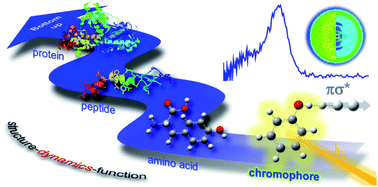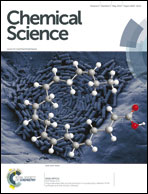The role of πσ* states in the photochemistry of heteroaromatic biomolecules and their subunits: insights from gas-phase femtosecond spectroscopy
Abstract
In an effort to illuminate why nature has chosen a particular set of bio-molecular ‘building-blocks’ for life, recent years have seen an up-surge of gas-phase spectroscopy experiments aimed at understanding why the DNA/RNA nucleobases, aromatic amino acids and their corresponding chromophore subunits, exhibit a resistance to photochemical damage (photostability) following the absorption of ultraviolet (UV) radiation. The research considered in this Perspective article specifically focuses on the role of electronically excited dissociative 1πσ* states (formed through the photo-induced promotion of an electron in a σ* ← π molecular orbital transition), which have been implicated to contribute to this photostable behaviour. In particular, we review the application of gas-phase femtosecond pump-probe spectroscopies to gain insights into 1πσ* state driven relaxation dynamics in a number of heteroaromatic biomolecules and their UV chromophore subunits. This Perspective article also discusses how the information obtained from these studies can be used as a ‘stepping-stone’ for extending this research to larger, more complex biomolecules and ultimately, more realistic systems in solution.


 Please wait while we load your content...
Please wait while we load your content...